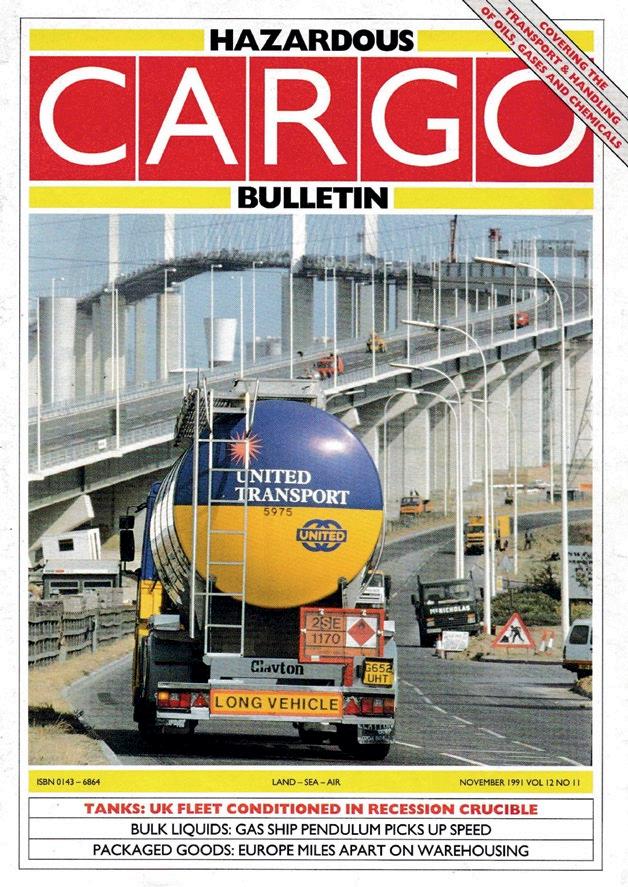
2 minute read
30 Years Ago
from HCB November 2021
A LOOK BACK AT NOVEMBER 1991
Flicking through the pages of the November 1991 issue of HCB reminds us once again that, in many ways, not a lot has happened over the past 30 years. For example, the US National Transportation Safety Board (NTSB) was even then concerned with the safety of rail tank wagons, particularly their ability (or not) to withstand impact during a derailment.
NTSB noted that highly hazardous materials were still being transported in tank cars that provided inadequate protection, even though improved tank cars were available. It remarked that DOT-111A tank cars had a particularly high incidence of failure and repeated its call for better puncture protection, thermal protection and/or thicker shells. Indeed, our Incident Log that month reported on a head-on collision between two freight trains near Knox, Indiana in September, which resulted in a spillage of molten sulphur, a large fire and the death of one engineer.
NTSB also called for an improvement in emergency response plans, with the participation of railroad and local emergency response personnel, and for better training. Some of these recommendations have come to pass, though NTSB, along with the Federal Railroad Administration and Association of American Railroads, is still pursuing a number of safety goals in rail transport.
Elsewhere in November 1991, there were – perhaps surprisingly – some early signs of the promotion of a circular economy, not least in the field of dangerous goods packaging. The UN Sub-committee of Experts on the Transport of Dangerous Goods (those nice people who are responsible for the Orange Book) took a hard look at clarifying the specifications for reconditioned metal drums, on the basis of a paper from the International Confederation of Drum Reconditioners, which was largely supported. Indeed, HCB noted that part of that support was based on the environmental advantages offered by reprocessed metal drums.
Other issues on packaging that the Sub-committee worked on that year included a US proposal to add a vibration test, a revised definition for ‘siftproof’, clarification of the pressure differential requirement for air transport, and revisions to the marking requirements.
Also on the regulatory pages, HCB reported that IMO’s Legal Committee was eager to progress the adoption of the HNS Convention, which sought to provide a compensation regime for damage arising from the maritime transport of hazardous and noxious substances, analogous to that already in place for oil. While completion of the HNS Convention was turning out to be a complex and time-consuming matter, it was anticipated that the initial ‘late 1992’ deadline would be pushed back to 1994. It has, in fact, turned out to be even more complex than envisaged and the HNS Convention remains – notionally, at least – a work in progress. Perhaps there are some who are hoping that the world will eventually forget all about it.
On a more positive note, it appeared that the US Chemical Manufacturers’ Association’s (CMA) new Responsible Care initiative was paying dividends in terms of safety. Research suggested that chemical producers were becoming increasingly choosy about their logistics partners, resulting in fewer getting the work, and that transport had become a senior management issue within the chemical industry. CMA had begun work to develop a third-party assessment system that would audit carriers for safety fitness and regulatory compliance. It seems normal nowadays but in 1991 this was ground-breaking stuff.










